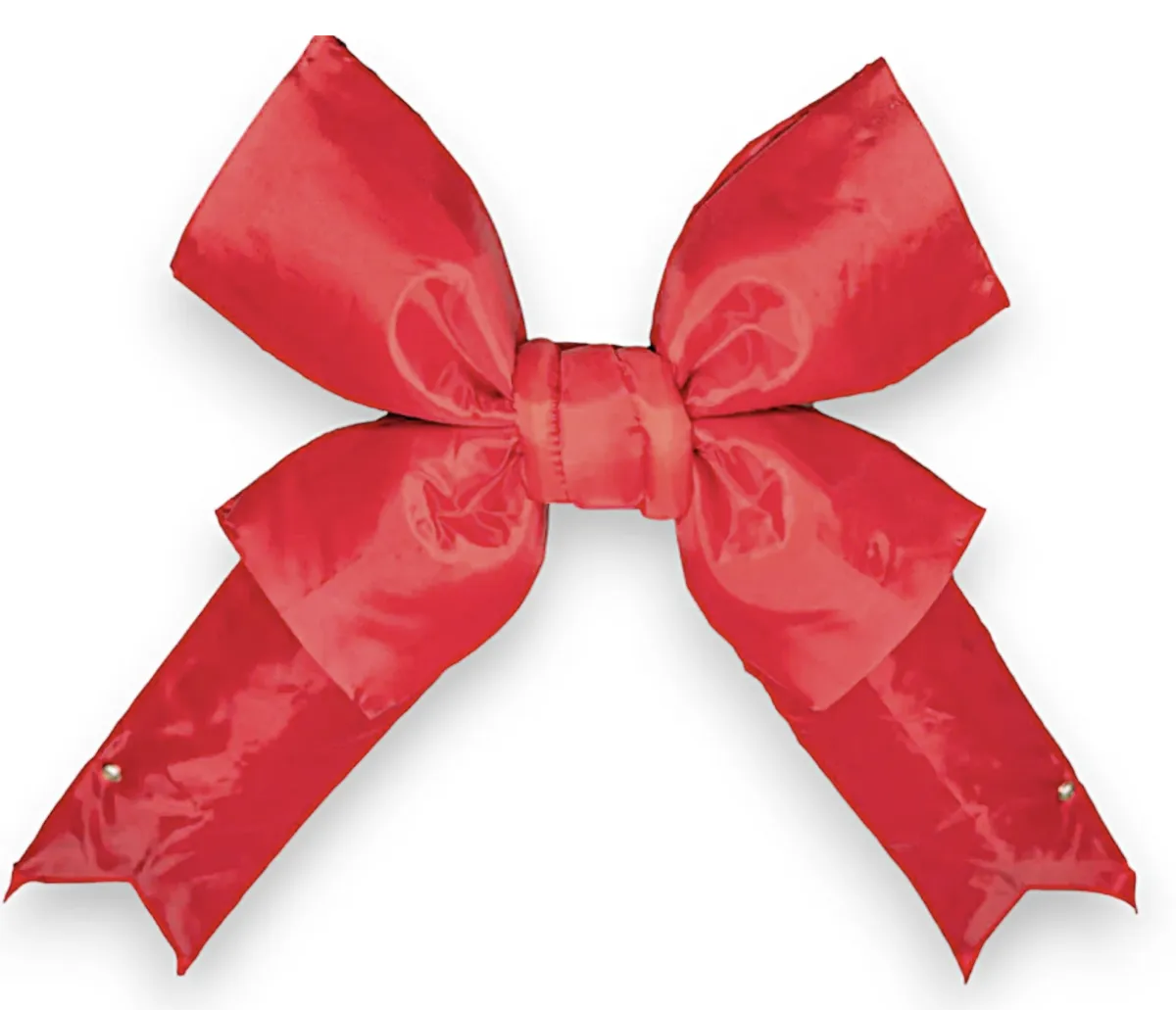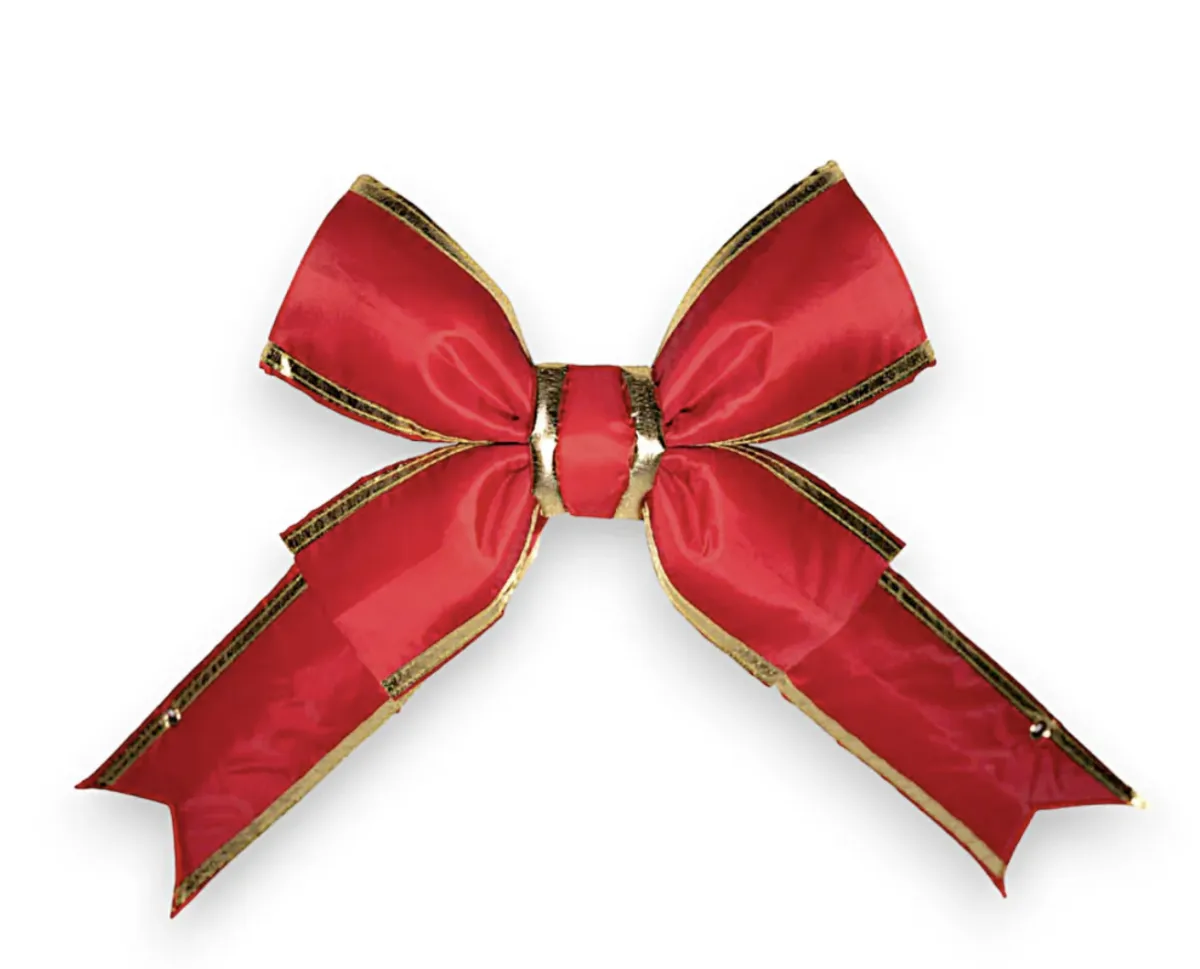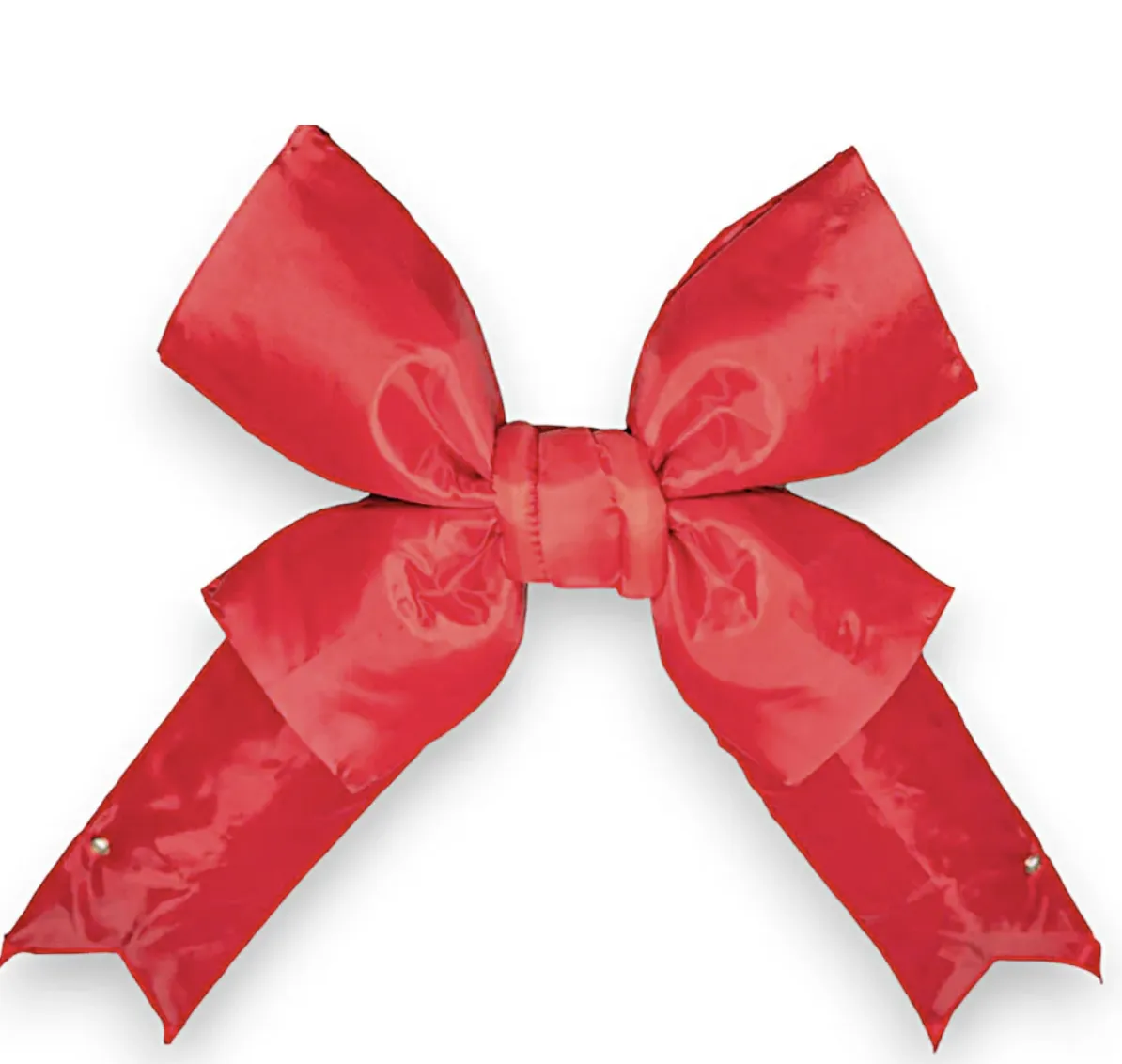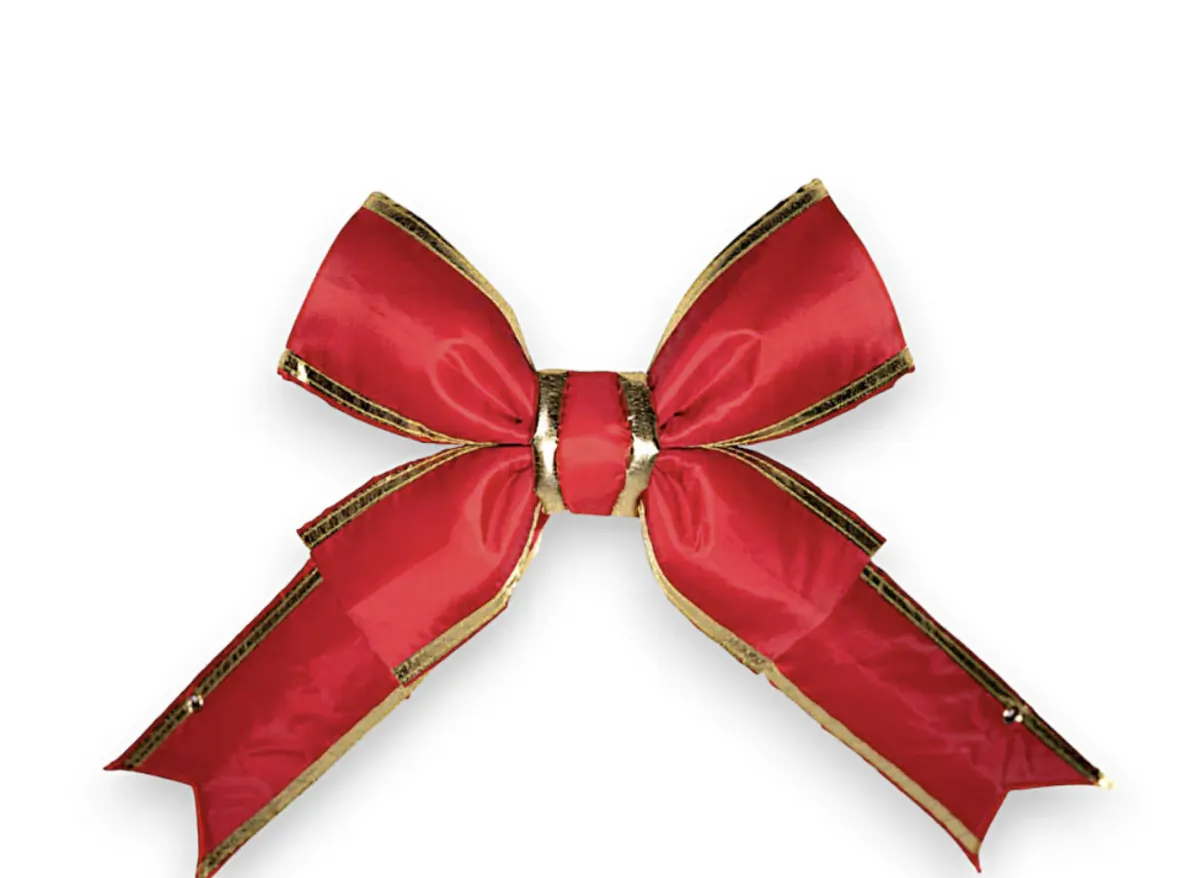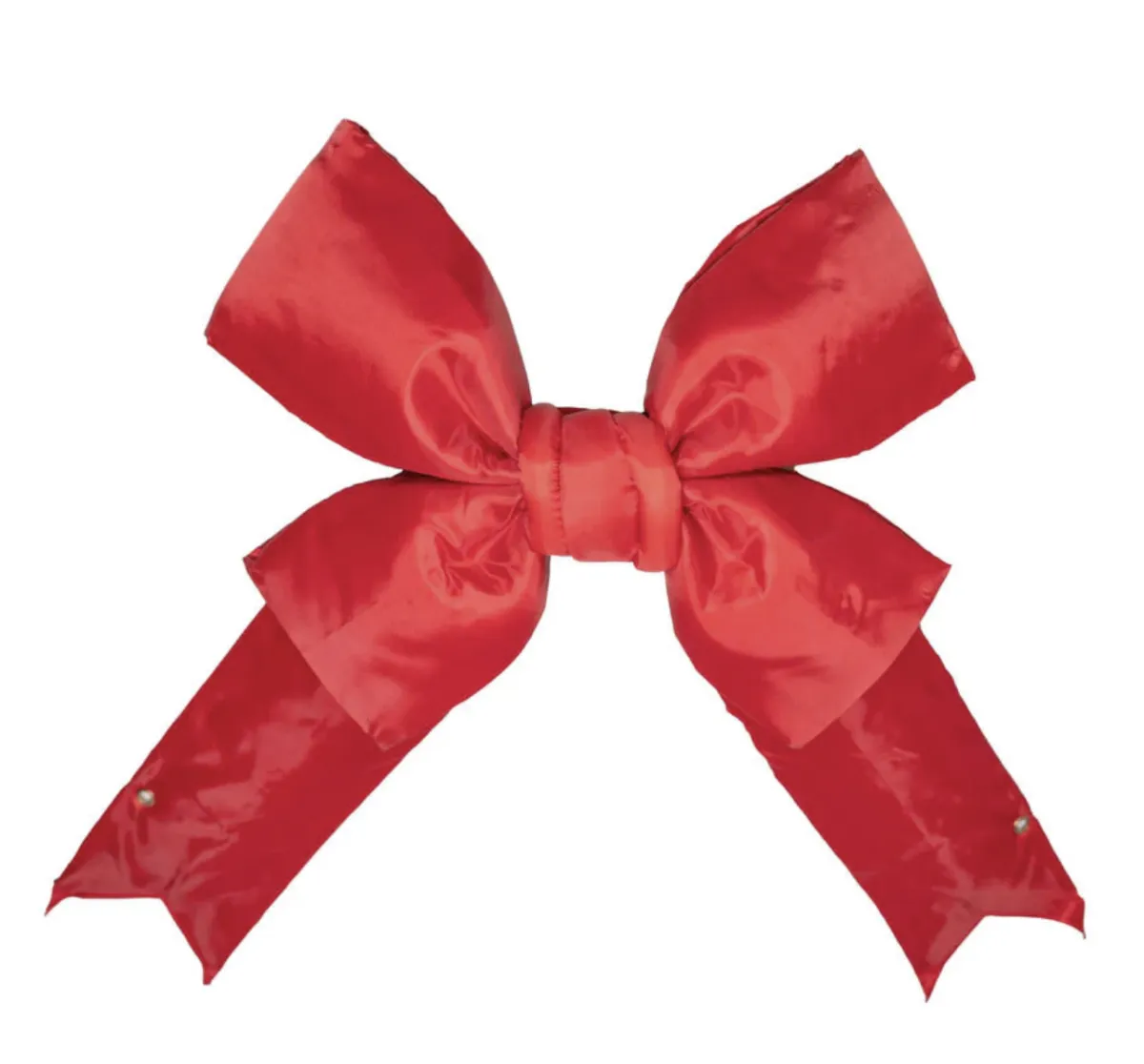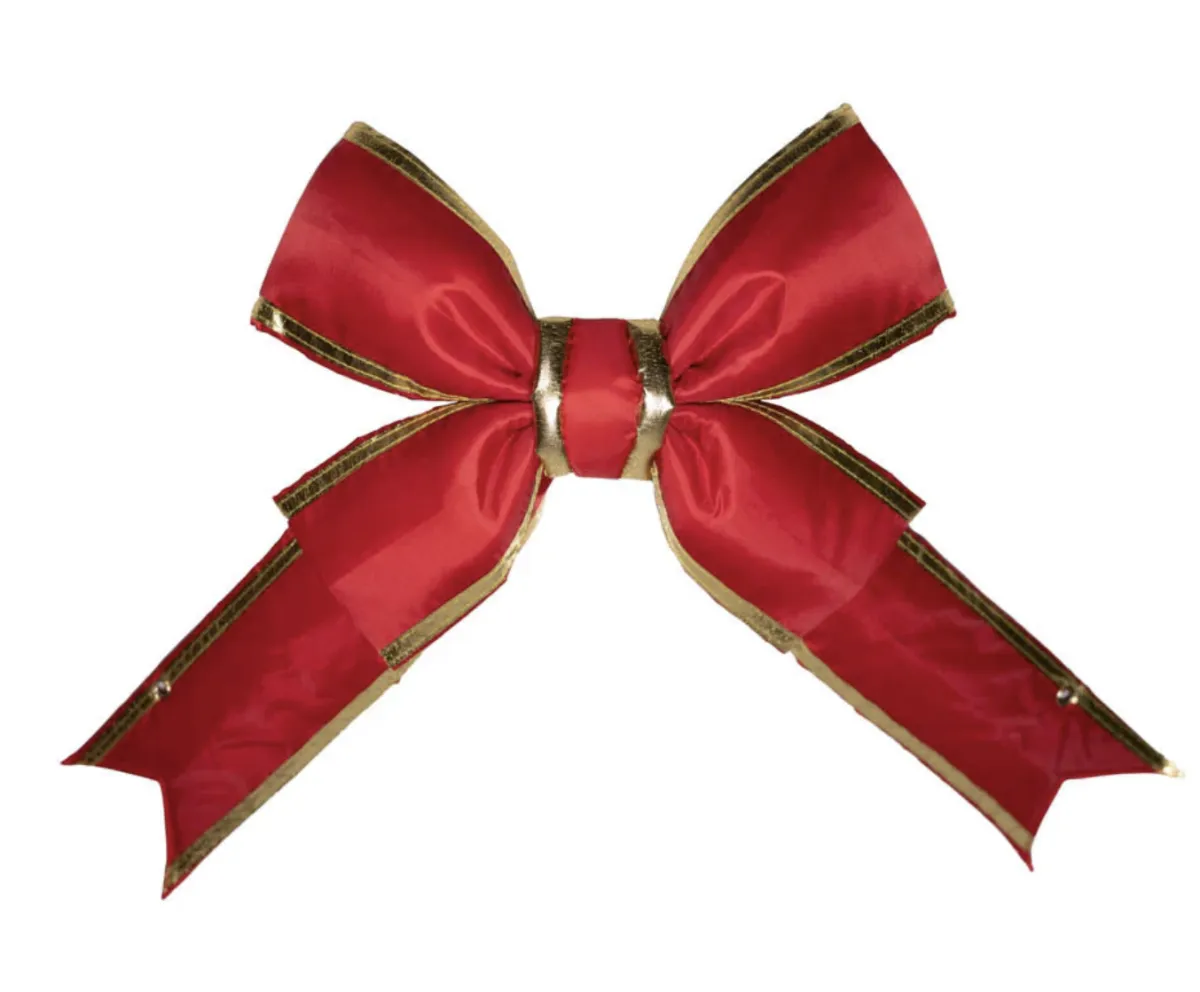Christmas Bows:
Timeless Holiday Elegance
Christmas bows are a quintessential holiday decoration, offering both simplicity and beauty to festive displays. These versatile accents can enhance both interior and exterior spaces, adding a cheerful touch to various holiday arrangements. The image of a vibrant red bow crowning a lush green wreath has become an iconic symbol of Christmas decor, embodying traditional holiday charm. Whether used as a standalone accent or as part of a more elaborate display, Christmas bows effortlessly infuse any setting with seasonal spirit, making them an indispensable element in creating warm and inviting holiday atmospheres.
Christmas Bows
Choosing the right Christmas bow can elevate your holiday decorations from good to great. When selecting a bow for your wreath, aim for one that's approximately one-third the size of the wreath itself – this proportion creates a visually pleasing balance. If you're adorning windows with festive bows, opt for suction cup hooks or specially designed adhesive hooks for easy, damage-free installation and removal. For outdoor displays, durability is key. Weather-resistant materials like polyester or nylon are your best bet, as they can withstand the elements while maintaining their vibrant appearance throughout the season. By considering these factors – size, attachment method, and material – you can ensure your Christmas bows add that perfect touch of holiday cheer to your decorations, both inside and out.
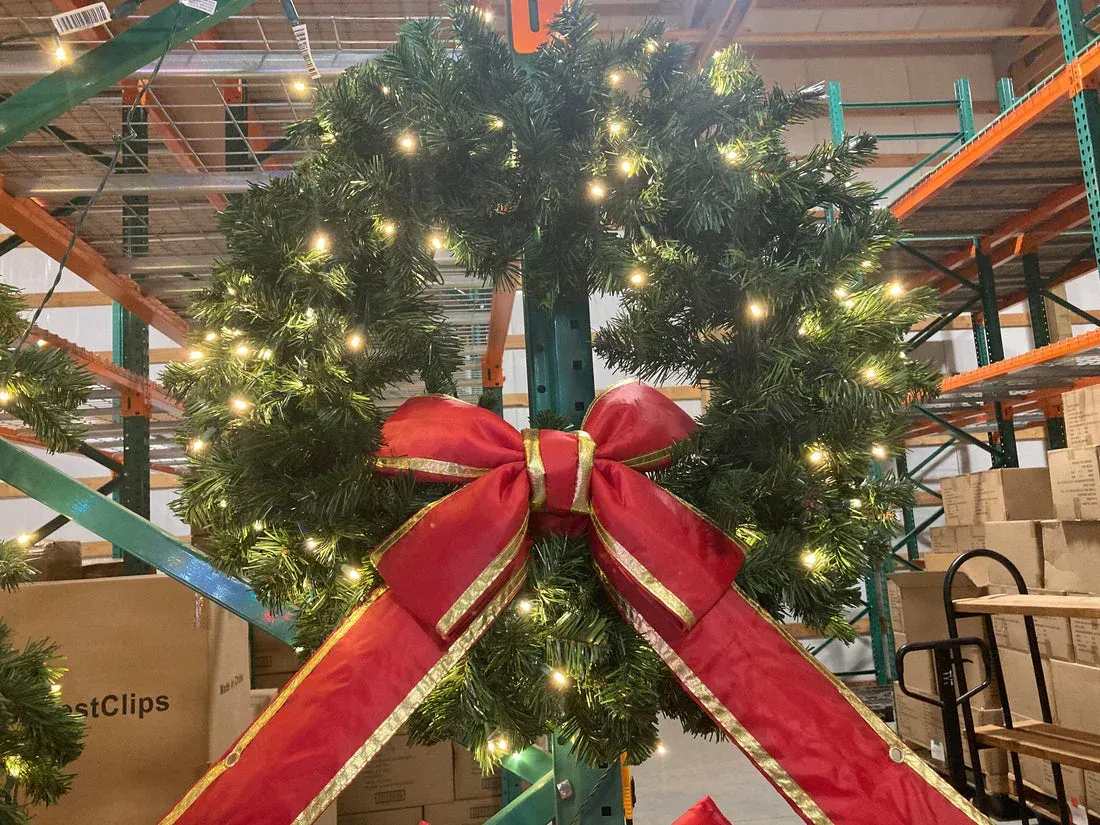


Elevate your holiday decor
with perfectly placed Christmas bows.
Before installation, shape your bow using its internal wire, assembling puff bows if needed. Choose bow sizes proportional to your decorations: half the wreath's diameter, 15"-18" for garlands, and smaller sizes for large trees. For windows, use outdoor-rated suction cups or command hooks. Mantel bows (15"-24") can be secured with command hooks, while stair banisters welcome 15"-18" bows attached via the provided wire. Outdoor installations on fences or posts may require zip ties or bungee cords for extra security. Most bows come with attached, plastic-coated wire for easy, scratch-free installation on various surfaces. After the season, store bows in waterproof bins, disassembling puff bows for flat storage. With these tips, you'll create stunning bow accents that perfectly complement your Christmas displays, both indoors and out.


Frequently Asked Questions
What sizes of nylon bows do you offer?
We offer a variety of nylon bow sizes to suit different decorating needs. Our range includes 12", 15", 18", and 24" bows, ensuring you can find the perfect size for your project, whether it's for a wreath, a large outdoor display, or anything in between.
What colors are available for your nylon bows?
Our nylon bows come in classic holiday colors. We offer solid red bows for a traditional look, as well as red and gold combination bows for a more luxurious appearance. These color options allow you to easily match or complement your existing holiday decor.
Are your bows suitable for outdoor use?
Yes, our nylon bows are designed to withstand outdoor conditions. Nylon is a durable material that holds up well against various weather elements, making these bows perfect for both indoor and outdoor holiday decorations.
Can I use these bows for professional Christmas light installations?
Absolutely! Our nylon bows are of professional-grade quality, making them ideal for commercial and residential Christmas light installations. They add a polished, festive touch to any holiday display and are durable enough to last throughout the season.
How do I attach these bows to my decorations?
Our nylon bows are designed for easy attachment. They typically come with wire ties or loops that allow you to secure them to wreaths, garlands, light displays, or other decorations. For more permanent installations, you can also use zip ties or floral wire.
Can I mix different sizes of bows in my decorations?
Yes, mixing bow sizes can create visual interest and depth in your decorations. For example, you might use larger 24" bows as focal points on main doors or large wreaths, while using smaller 12" or 15" bows for accent pieces or smaller decorations. This variety can add a professional touch to your overall holiday display.
Discover Expert Tips on Our Blog

Simplify Metal Cutting with DeWalt's 20V Max XR
Metal cutting is an essential skill in many DIY projects, especially when it involves precise installations like permanent Christmas lights. A common challenge for many is achieving clean, precise cuts without damaging the material or ending up with a jagged finish. The DeWalt cutter emerges as a practical solution, offering ease and precision. This blog explores how to effectively use the DeWalt cutter, ensuring your metal cuts are not just good, but exceptional.
Unboxing the DeWalt Cutter
Initial Impressions
Upon opening the DeWalt cutter's box, you're greeted with a robust tool that promises durability and precision. The package typically includes a variety of blades—each suited for different materials, but for our purposes, the metal blade is our focus. The heft and grip of the tool suggest it's built for heavy-duty tasks, yet it's designed ergonomically to prevent user fatigue during extended use.
Setting Up
Setting up the DeWalt cutter involves a straightforward process:
1. Blade Installation: Begin by removing the blade guard to access the blade slot. The metal blade included is specifically designed for slicing through metal with minimal burr and heat generation.
2. Securing the Blade: Utilize the provided tool to loosen the retaining bolt, insert the blade, ensuring it's seated properly, and then tighten the bolt. The cutter’s design features a reverse-thread system, which might feel counterintuitive (lefty tighty, righty loosey), but it ensures the blade remains secure under the tool’s high-torque operation.

Preparing for the First Cut
Safety First
Before making the first cut, it's crucial to don safety glasses and sturdy gloves. Metal cutting can produce sharp debris and sparks, which can be hazardous. The DeWalt cutter comes equipped with a blade guard and an emergency stop feature, enhancing safety during operation.
Making the Cut
Marking the metal accurately is key to a perfect cut. Use a permanent marker to draw your cut line clearly. Position the cutter so that the blade aligns with the mark. The tool’s guide light (if available) can help illuminate the line during the cut, ensuring precision.
Practical Cutting Tips
Techniques for Clean Cuts
- Maintain the Tool: Regular maintenance, such as cleaning the blade and lubricating the moving parts, can significantly extend the cutter's life and performance.
- Operate at the Right Speed: Adjust the cutter's speed based on the thickness and type of metal. Slower speeds are better for thicker, harder metals to prevent blade overheating and wear.
Advanced Cutting Techniques
- Angled Cuts: For angled cuts, adjust the blade guard to the desired angle. This feature is incredibly useful for creating joins or decorations in metalwork projects.
- Handling Complex Cuts: For intricate or complex cuts, make several shallow passes to gradually achieve the depth, rather than trying to cut through thick metal in one go.

Post-Cutting Cleanup and Maintenance
Cleaning and Storing the Cutter
After use, it’s important to clean the cutter thoroughly to remove any metal filings or debris. Storing the tool in a dry, clean environment will prevent rust and keep it ready for the next use.
Blade Maintenance
Regularly inspect the blade for signs of wear or damage. Replace the blade if it becomes dull or damaged to maintain cutting efficiency. Keeping a few spare blades on hand is recommended for seamless project continuation.
The DeWalt cutter is an indispensable tool for those requiring precise and clean cuts in metal. By following the above guidelines, users can maximize the tool’s capabilities and ensure their projects turn out both successful and safe.

1. What safety gear should I wear when using the DeWalt cutter?
Answer: Always wear safety glasses to protect your eyes from metal debris and sparks. Sturdy gloves are also recommended to safeguard your hands from sharp edges and heat. Additionally, if you are working in a noisy environment or the tool is particularly loud, consider using ear protection.
2. How do I install a blade on the DeWalt cutter?
Answer: To install a blade on the DeWalt cutter, first remove the blade guard to access the blade slot. Use the included tool to loosen the retaining bolt, insert the metal blade ensuring it's properly seated, and then retighten the bolt. Remember, the cutter uses a reverse-thread system, so you'll tighten to the left and loosen to the right.
3. What should I do if the cut isn't clean or precise?
Answer: Ensure the blade is sharp and properly installed. If issues persist, check that you’re using the correct blade type for the metal you are cutting. Additionally, adjust the speed settings according to the metal’s thickness and hardness. Multiple shallow passes may be necessary for thicker or harder metals.
4. How do I maintain the DeWalt cutter?
Answer: After each use, clean the cutter to remove any metal filings or debris. Regularly check and lubricate moving parts to keep them functioning smoothly. Store the cutter in a dry, clean environment to prevent rust and degradation. Blade maintenance is also crucial; inspect blades regularly for wear and replace them as needed.
5. Can the DeWalt cutter make angled cuts?
Answer: Yes, the DeWalt cutter can be adjusted to make angled cuts. Adjust the blade guard to your desired angle before cutting to achieve clean and precise angled cuts. This feature is useful for creating joins or customized shapes in your metalwork projects.
Copyright ©2025 All Right Reserved website designed by christmaslights.io
Terms of Service / Privacy Policy
Have questions or need assistance?
Contact us at (855)619-LITE


